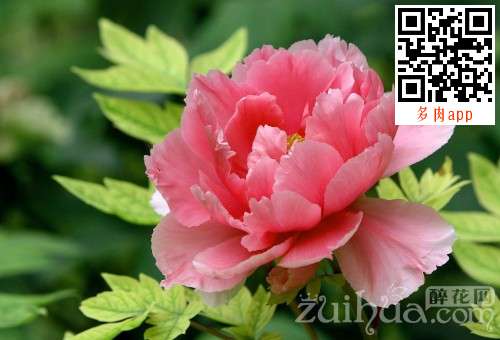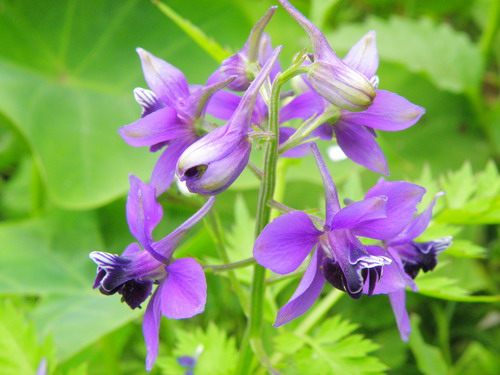Culture method of Paeonia lactiflora (Radix Paeoniae Alba and Flos Lonicerae)
Paeonia lactiflora (will leave, boneless flower)
Scientific name: paeonia lactiflora
Aliases: will leave, leave grass, greedy tail spring, Yu Rong, plough food, boneless flower, black trail, red medicine, etc.
Family and genus: Ranunculaceae
Morphological features: underground with thick and strong roots, plant height 60-120 cm. The leaves are alternate and the leaves are pinnately compound. Flowers-to several on top of stem or branched tip, long pedicellate, large and fragrant. There are many kinds of gardening.
Ecological habits: like light, extremely cold-resistant, avoid hot and humid summer, suitable for sandy soil. Paeonia lactiflora plants develop in stages with the change of climate rhythm in one year. It is mainly characterized by the alternation of growth period and dormancy period. Among them, the vernalization stage in the dormant period and the light stage in the growing period are the most important. The vernalization stage of Paeonia lactiflora requires that it can be completed after about 40 days at a low temperature of 0 degrees Celsius. After the mixed buds grow and germinate, they will branch and grow leaves on the ground, and the buds will blossom. Paeonia lactiflora is a long-sunshine plant, and the flower buds should develop and bloom under long-day sunshine. After mixed bud germination, if the light time is not enough, or under short-day conditions, the flower buds usually only grow leaves but do not blossom or blossom abnormally.
Flowering period: April to May.
Flower words: shame, shyness, irritability. China's traditional famous flowers are known as "flower immortals" and "flower phase".
Garden uses: flower beds, flower borders, flower beds, special gardens, cut flowers, potted plants.
Species identification: belong to similar species-peony p. Suffruticosa.
① peony: grass peony, the plant is relatively short, the leaflet is narrow, the front end is undivided, the front and back sides are black and green, many flowers are clustered at the top of the branches, the flowers are relatively small, and the florescence is in mid-early May.
② peony (Paeonia lactiflora): shrubs, plant height 2m, leaflets wider, front end split, surface yellowish green, pilose, flowers solitary branch top, larger flowers, florescence in late April, follicles hairy. It is known as "King of Flowers".

Paeonia lactiflora is cold-resistant and can survive the winter in open field in the north of China. Deep loam is the most suitable soil, and moist soil is the best, but the drainage must be good. Stagnant water, especially in winter, is easy to cause peony fleshy root rot, so low-lying land and saline-alkali land are not suitable for cultivation. Paeonia lactiflora is fond of fertilizer, and the nursery should be turned deeply and fully fertilized with mature stable manure, which grows best in the place where there is plenty of sunshine. The propagation of Paeonia lactiflora includes sowing, cuttage and plant division, which is usually based on branch propagation. It is appropriate to plant from late September to early October. Dig up the roots, shake down the soil, cut them with a knife, make each root cluster have 2-3 buds, preferably 3-5 buds, and then plant the ramet roots in the prepared nursery. If the ramet root cluster is large (with 3-5 buds), there may be flowers in the second year, but the shape is small, so it is better to remove to make the plant grow well. Roots from small (2-3 buds), poor growth or no flowering in the second year, usually cultured for 2-5 years. Sowing propagation should be sowed immediately after the seeds are ripe, and the later the sowing is, the lower the germination rate is. The seeds of Paeonia lactiflora had the phenomenon of Hypocotyl dormancy, which took root in the autumn after sowing, and the bud was not unearthed until the next spring was warm. The growth of seedlings is slow, some buds do not blossom until 3-4 years old, and others do not bloom until 5-6 years. Cutting method can be root cutting or stem cutting. In autumn, the roots can be collected and cut into 5-10 cm segments and buried in 10-15 cm deep soil. In the stem insertion method, about two weeks before flowering, the middle part of the stem is made up of two sections, and the cuttings are inserted into the sandy soil of the hotbed for about an inch and a half, requiring shade and frequent watering. One and a half to two months later, they can take root and form dormant buds.
- Prev

What is thyme? the culture method of thyme
Thyme scientific name: thymusvulgaris alias: thyme, ground pepper, ground pepper, mountain pepper, family and genus: Labiatae, thyme. Morphological characteristics: the plant is about 20 cm tall and the whole plant has aroma and mild spicy taste. The lower part of the stem is creeping and tufted, the upper part is erect, quadrangular.
- Next

The Culture method of Emerald Finch (Sparrow)
Scientific name: delphiniumgrandiflorum alias: Pigeon Flower, Cyperaceae: Ranunculaceae: morphological characteristics: perennial herbs, plant height 30-80 cm. Stems erect, much branched, stems and petioles retrorse and appressed pilose. Ye Musheng
Related
- Fuxing push coffee new agricultural production and marketing class: lack of small-scale processing plants
- Jujube rice field leisure farm deep ploughing Yilan for five years to create a space for organic food and play
- Nongyu Farm-A trial of organic papaya for brave women with advanced technology
- Four points for attention in the prevention and control of diseases and insect pests of edible fungi
- How to add nutrient solution to Edible Fungi
- Is there any good way to control edible fungus mites?
- Open Inoculation Technology of Edible Fungi
- Is there any clever way to use fertilizer for edible fungus in winter?
- What agents are used to kill the pathogens of edible fungi in the mushroom shed?
- Rapid drying of Edible Fungi

